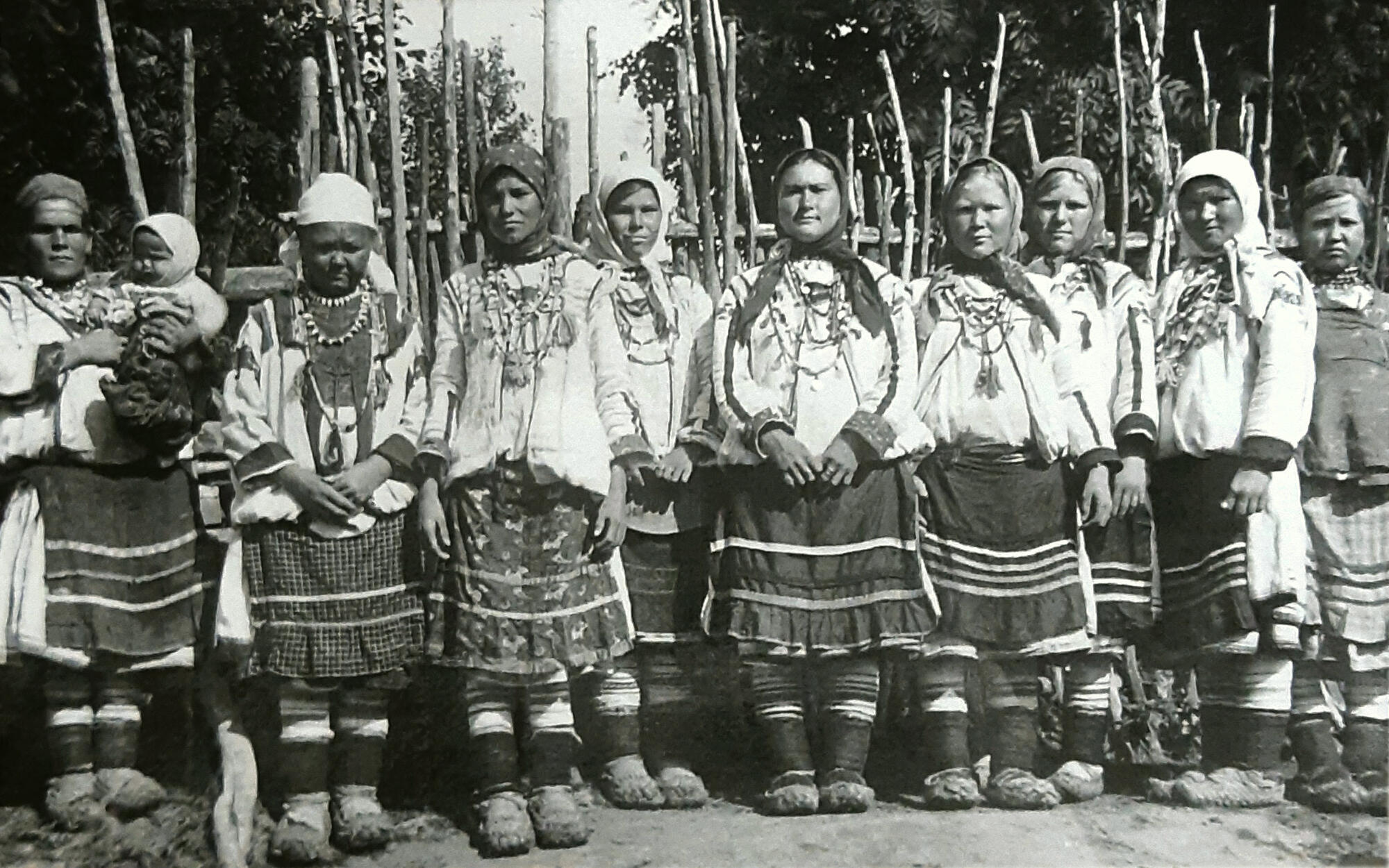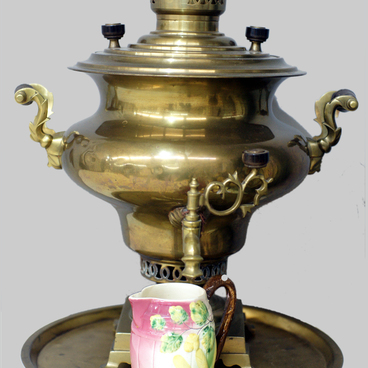This photo features women of Northern Udmurtia. There are two distinct kinds of Norther Udmurt attire, which can be distinguished based on the cut and the design method: Verkhnetsepetsky style and Nizhnetsepetsky style. In this photograph, we see the Udmurt women in the Nizhnetsepetsky national costume (Kosinsky type). The territory the Kosinskaya group of Udmurts used to inhabit is the former territory of the Glazovsky and partly Slobodsky Uyezds of the Vyatka Governorate, that is, the basin of the Kosa River.
Udmurts are the native people of this land. According to a 2010 census, there are 552,000 people of that ethnic group. 70% of them live in the Republic of Udmurtia. Small Udmurt exclaves can be found in Bashkortostan, Tatarstan, the Kirov Region, the Perm Region, and other regions of the country.
In the 2nd millennium BC, Udmurt people were split into two populations: northern and southern. Northern Udmurts were under the strong influence of the Russian North, while southern Udmurts were mostly influenced by the steppe ways of the Turks. Udmurts are strong and hardy, and yet they are often modest to the point of timidity; they are laconic in their speech and often reserve their feelings to themselves. First Russian written mention of Udmurts dates back to the late 14th century. 18th-century travelers that visited the Udmurt people have noted that they were kind and gracious hosts.
Northern Udmurt women manufactured summer clothes from homespun fabric made with linen. The attire comprised an open caftan and a shirt. The caftan with a fold-down quadrangular collar and short sleeves had a longitudinal slit on the shoulder through which the shirt sleeve was threaded. Cuffs of shirt sleeves were decorated with chintz, typically red, but other bright colors were also used. The suit was complemented by a quadrangular apron with a frill at the bottom, but without breast. The way this attire was worn is peculiar — with a large slouch over the belt. Within any and all groups, Udmurt young women wore round canvas hats trimmed with red bunting, beads, and coins. Women’s two-piece attire was complimented with an embroidered removable bib (kabachi). The decoration on the chest is glass beads with silver coins and kauri shells. On their legs, they used to wear stockings from homespun fabric (chugle) or pogolenki. Footwear — bast shoes, usually form linden bark.
Udmurts are the native people of this land. According to a 2010 census, there are 552,000 people of that ethnic group. 70% of them live in the Republic of Udmurtia. Small Udmurt exclaves can be found in Bashkortostan, Tatarstan, the Kirov Region, the Perm Region, and other regions of the country.
In the 2nd millennium BC, Udmurt people were split into two populations: northern and southern. Northern Udmurts were under the strong influence of the Russian North, while southern Udmurts were mostly influenced by the steppe ways of the Turks. Udmurts are strong and hardy, and yet they are often modest to the point of timidity; they are laconic in their speech and often reserve their feelings to themselves. First Russian written mention of Udmurts dates back to the late 14th century. 18th-century travelers that visited the Udmurt people have noted that they were kind and gracious hosts.
Northern Udmurt women manufactured summer clothes from homespun fabric made with linen. The attire comprised an open caftan and a shirt. The caftan with a fold-down quadrangular collar and short sleeves had a longitudinal slit on the shoulder through which the shirt sleeve was threaded. Cuffs of shirt sleeves were decorated with chintz, typically red, but other bright colors were also used. The suit was complemented by a quadrangular apron with a frill at the bottom, but without breast. The way this attire was worn is peculiar — with a large slouch over the belt. Within any and all groups, Udmurt young women wore round canvas hats trimmed with red bunting, beads, and coins. Women’s two-piece attire was complimented with an embroidered removable bib (kabachi). The decoration on the chest is glass beads with silver coins and kauri shells. On their legs, they used to wear stockings from homespun fabric (chugle) or pogolenki. Footwear — bast shoes, usually form linden bark.



